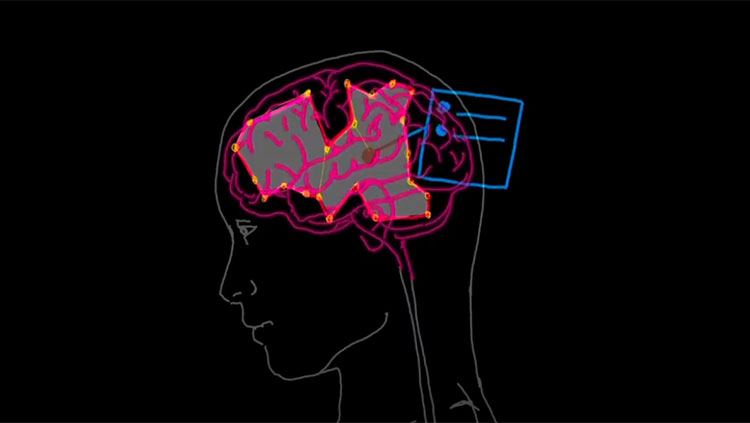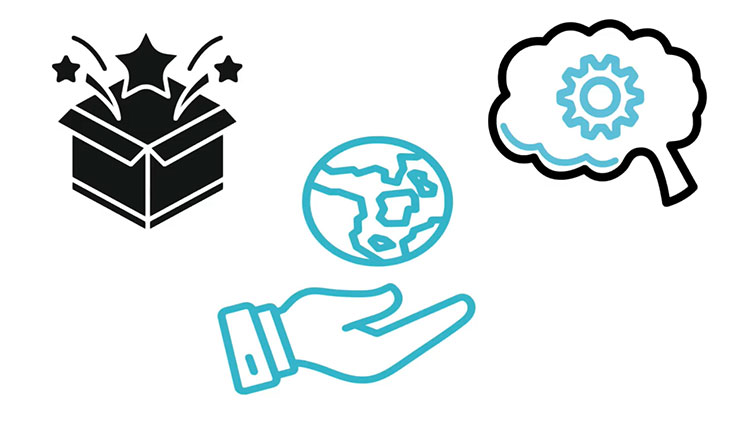Directed Focus: Attention
- Reviewed29 Aug 2022
- Author Melissa Galinato
- Source BrainFacts/SfN

Attention
If you are paying attention right now, there should be detectable changes in your heart rate, breathing, and blood flow. If that sounds familiar, it’s because those same physiological changes occur during arousal, which is necessary for being alert and paying attention.
The state of arousal calls for reactions to the environment. To make decisions about what to do, you need to focus on what’s happening in the environment, especially involving anything relevant to your goals. For example, if your goal is to run away from an angry bear, you need to be alert and pay attention to where you’re running so you don’t trip and fall. Scientists have theorized that the state of arousal speeds processing and improves comprehension of environmental details. Otherwise, your brain would need an infinite amount of time and energy to process all of its sensory inputs (sounds, sights, smells, and other feelings), because the environment is always changing.
Focus
Even with multitasking, it is impossible for the brain to process all its sensory inputs. Instead, people focus their attention on one thing at a time. Attention is a fascinating ability, because it enables you to have so much control and the ability to fine-tune your focus to different locations, times, and topics. Consider the page you are reading right now. Although you can see the whole page, you focus on only one line at a time. Alternatively, you can turn your attention to the past when you were reading the beginning of this page. Or you can ignore the sentences altogether and focus on the number of times the word “you” occurs on this page. Scientists recognize two types of attention, which involve different brain processes: voluntary (endogenous) attention and involuntary (exogenous) attention.
Voluntary attention happens when you choose what to focus on — like finding a loved one in a crowd. The frontal and parietal cortices of the brain are active when you control your attention or direct it towards a specific object or location. Involuntary attention occurs when something in the environment (like a sudden noise or movement) grabs your attention. Involuntary attention is a distraction from your chosen goals and, in fact, researchers often use distractor objects in attention experiments. Distractors can be emotional, like pictures of family, or non-emotional images that stand out from other stimuli, like a red circle surrounded by gray squares. Brain regions in the right hemisphere, collectively known as the ventral frontoparietal network, form a system that processes new and interesting stimuli that distract you from the task at hand. Research on attention can help us understand visual tasks, learning, child development, and disorders of attention.
Adapted from the 8th edition of Brain Facts by Melissa Galinato.
CONTENT PROVIDED BY
BrainFacts/SfN
References
Bartolomeo, P. (2007). Visual neglect. Current opinion in neurology, 20(4), 381-386. http://journals.lww.com/co-neurology/Abstract/2007/08000/Visual_neglect.2.aspx
Carretié, L. (2014). Exogenous (automatic) attention to emotional stimuli: a review. Cognitive, affective & behavioral neuroscience, 14(4), 1228. https://link.springer.com/article/10.3758/s13415-014-0270-2
Kincade, J. M., Abrams, R. A., Astafiev, S. V., Shulman, G. L., & Corbetta, M. (2005). An event-related functional magnetic resonance imaging study of voluntary and stimulus-driven orienting of attention. Journal of Neuroscience, 25(18), 4593-4604. http://www.braindetective.com/journalclub/2005Kincade.pdf
Langner, R., & Eickhoff, S. B. (2013). Sustaining Attention to Simple Tasks: A Meta-Analytic Review of the Neural Mechanisms of Vigilant Attention. Psychological Bulletin, 139(4), 870–900. https://www.ncbi.nlm.nih.gov/pmc/articles/PMC3627747/
Li, K., & Malhotra, P. A. (2015). Spatial neglect. Practical neurology, practneurol-2015. http://pn.bmj.com/content/15/5/333
What to Read Next
Also In Thinking & Awareness
Trending
Popular articles on BrainFacts.org








.jpg)










